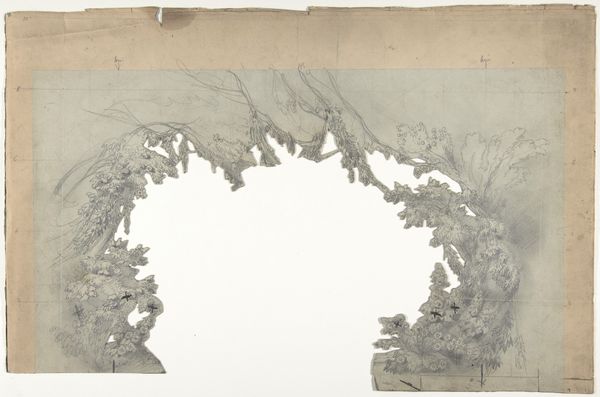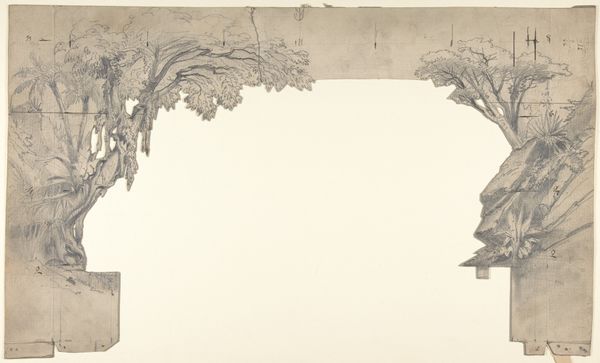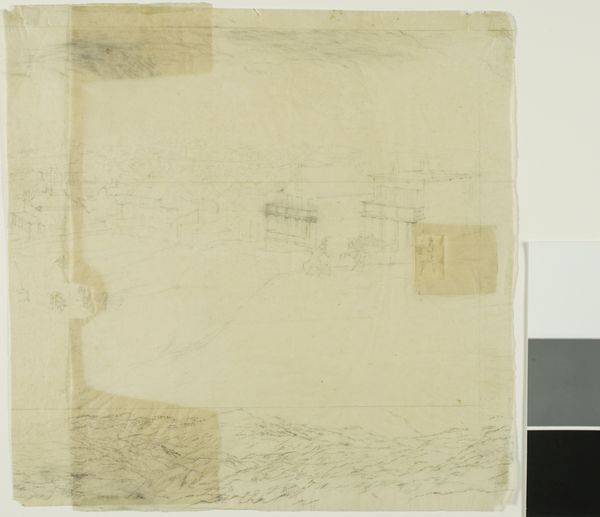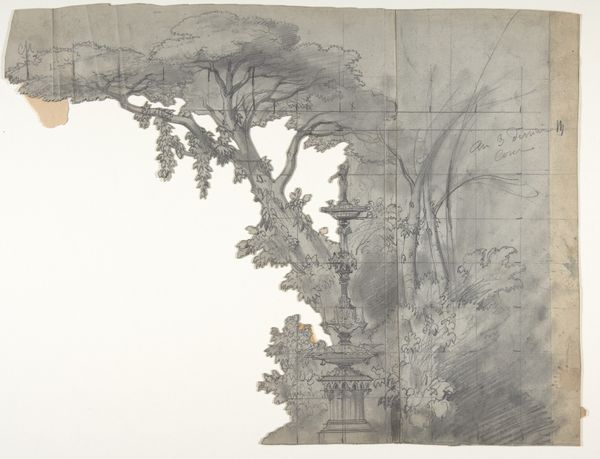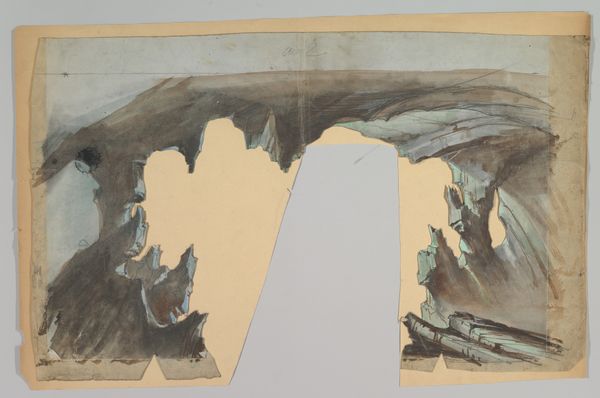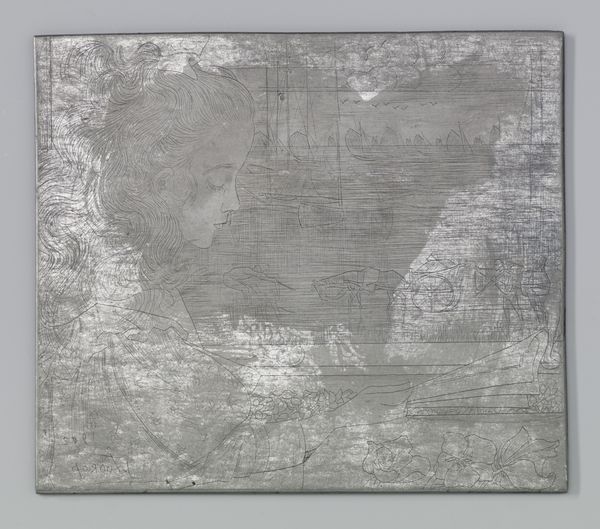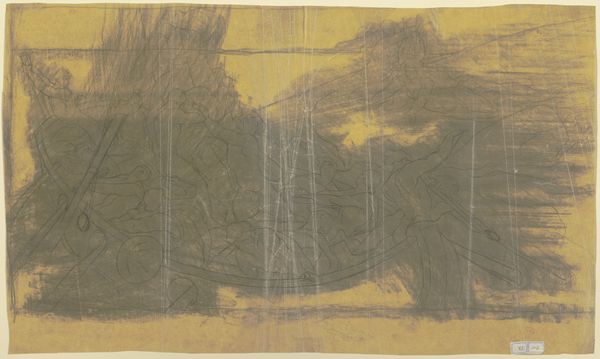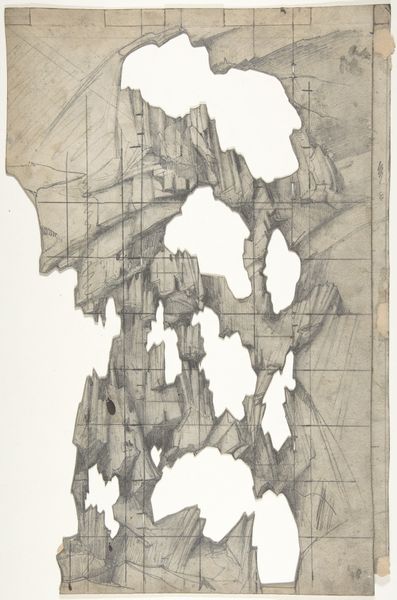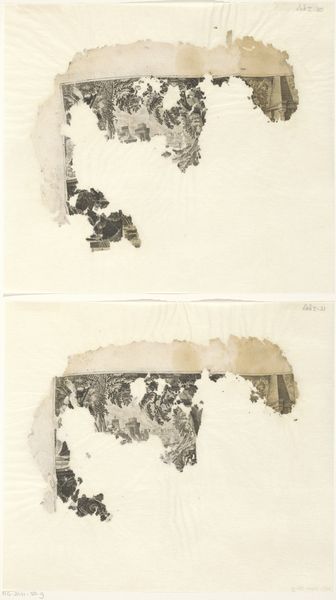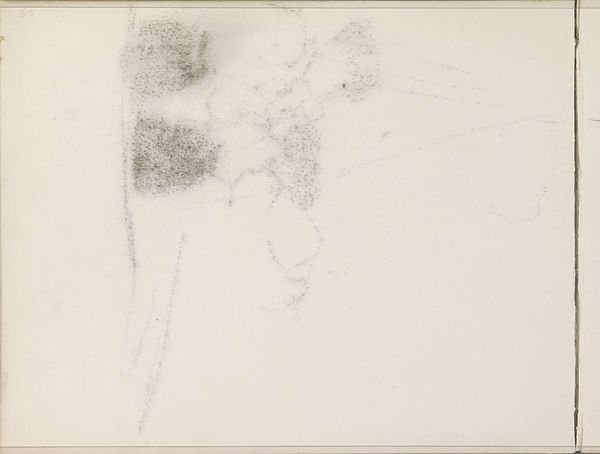
Copyright: Public Domain
Eugène Cicéri created this stage set design with graphite on paper sometime in the mid-19th century. Here, we see the artist in his professional role as a stage designer for the French Romantic theatre. The Romantic movement was fascinated by nature, and Cicéri’s design caters to this taste with its dense foliage, trees, and potted plants in the foreground. His rendering of nature is, however, carefully framed within the proscenium arch, reminding us of the controlled environment of the theatre. We can notice the symmetrical composition, the classical urn, and the precise rendering. These are all visual cues through which the artist signals the taming of nature in the service of bourgeois entertainment. To better understand this artwork, one could research the history of French theatre design, the conventions of Romanticism, and the social function of the theatre in 19th-century Paris. Examining these factors allows us to view Cicéri’s design not just as a pretty picture, but as a window into the cultural values of its time.
Comments
No comments
Be the first to comment and join the conversation on the ultimate creative platform.
